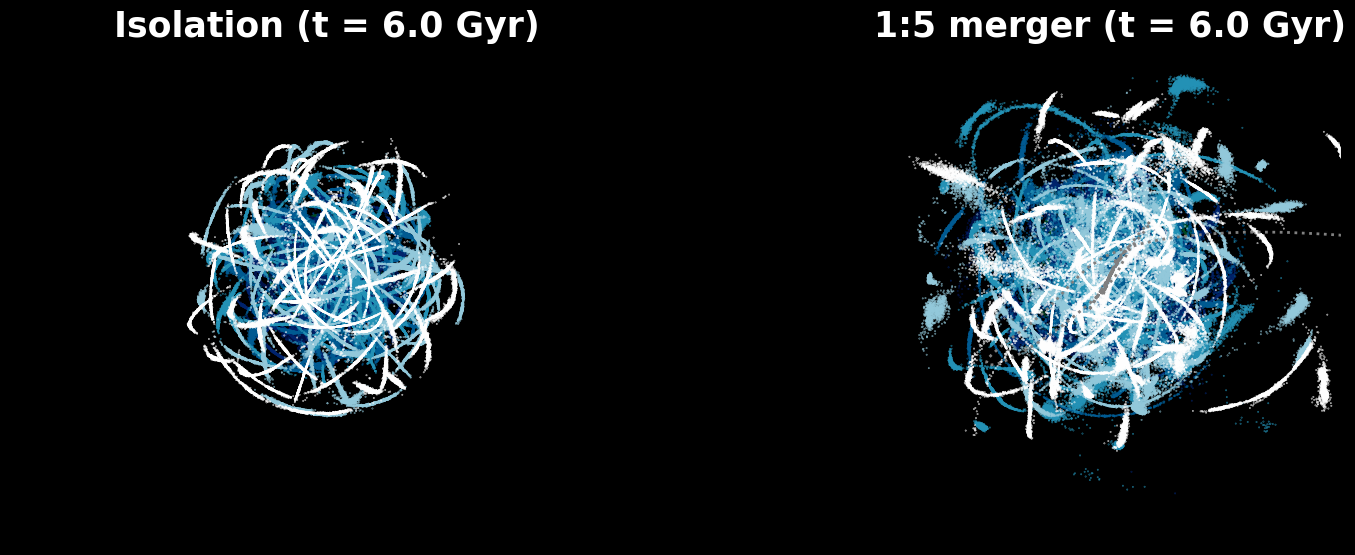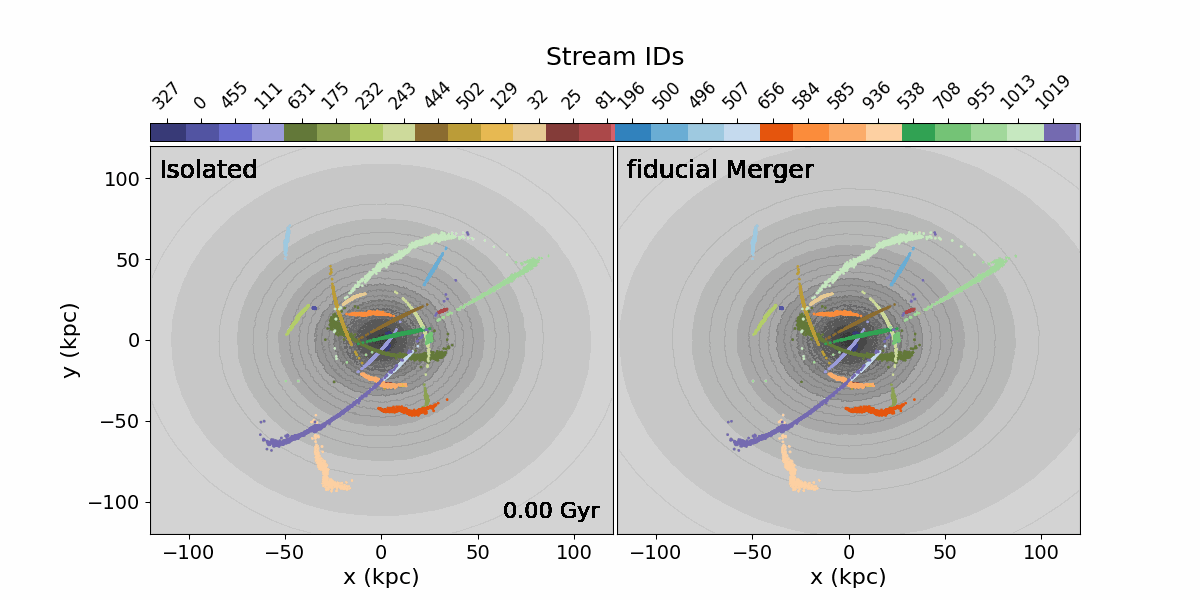Dancing Streams in Merging Halos
Exploring the impact of halo mergers on stellar streams.

Exploring the impact of halo mergers on stellar streams.

This project investigates how a diverse population of stellar streams responds to a major galaxy merger event.
Stellar streams—the remnants of disrupted globular clusters or dwarf galaxies—are recognized as tracers of galactic structure and evolution. These streams offer valuable insights into the gravitational potential and assembly history of galaxies.
While most previous studies have examined stream evolution in isolated halos, the effects of galaxy mergers on stream dynamics remain poorly understood.
In this study, we explore how a population of stellar streams evolves in response to a major perturbation, such as a galaxy merger. We simulate a large and diverse set of streams with varying orbital properties and compare their evolution in:
We present here the full sample of simulated streams used in our analysis. Low mass stellar streams (click for a 3D view, please allow few seconds to load) are numbered from 0-511, and high mass stellar streams (click for a 3D view, please allow few seconds to load) are numbered from 512-1023. Follow links to the same low mass and high mass stellar streams that evolved in isolation for comparison.
